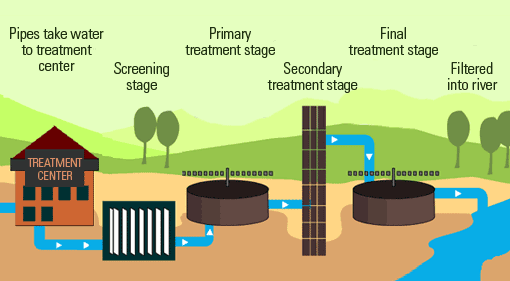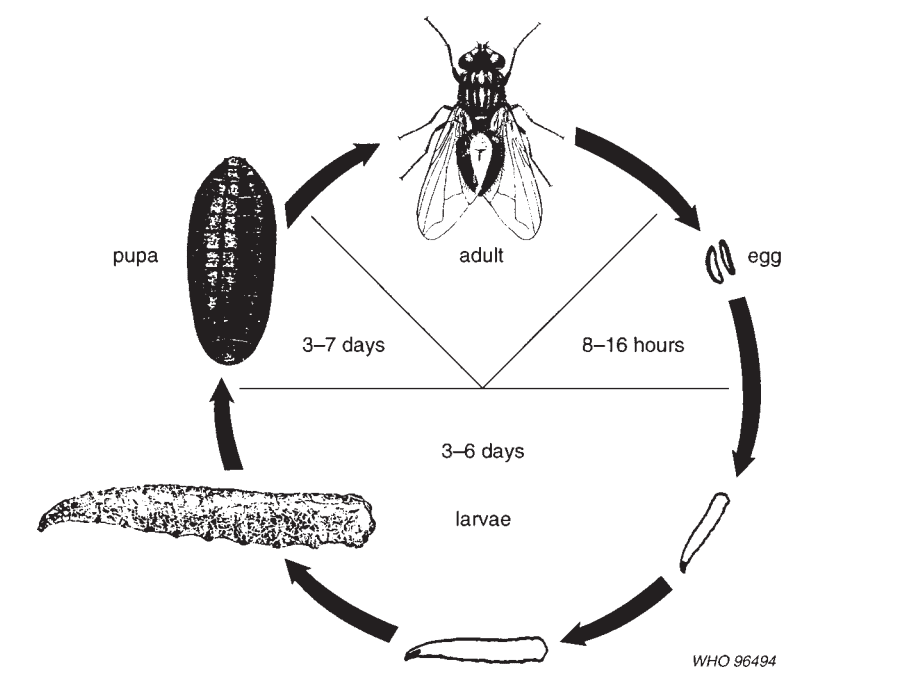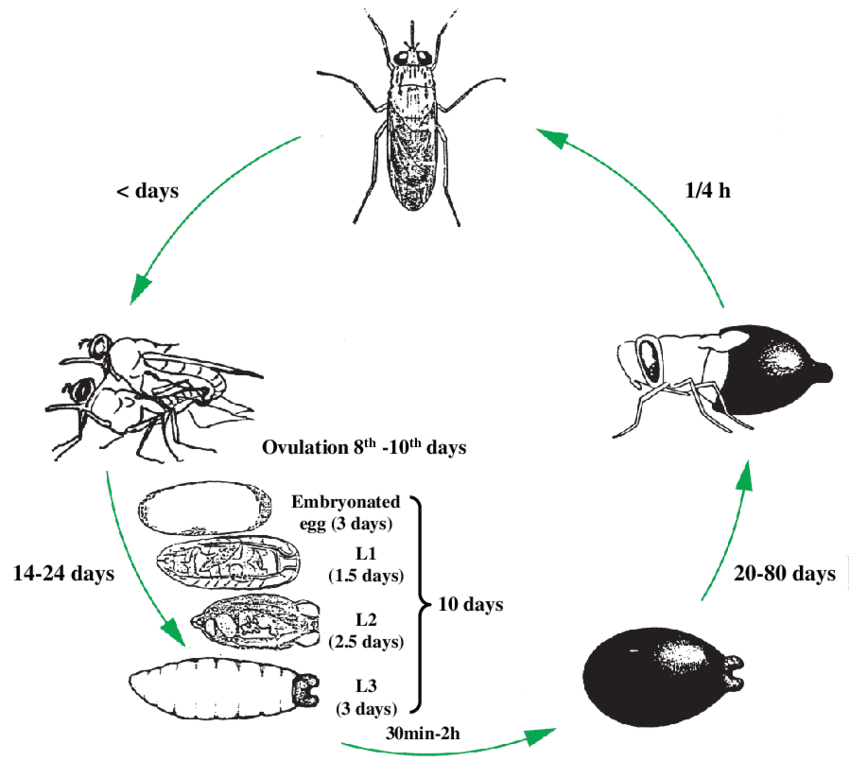Table of Contents
ToggleSanitation
Sanitation is the proper disposal of refuse and excreta.
AIMS
- It prevents breeding of flies
- It prevents breeding of mosquitoes and other insects.
- Prevents contamination of food, water, air.
DISPOSAL OF REFUSE
Refuse are present both in towns and rural areas and they should be disposed of in a proper way.
IN TOWNS
The household refuse is disposed of in refuse bins.
Then the local authority collects the refuse once or twice a week in a closed vehicle where it is disposed of outside the town or city.
METHODS OF DISPOSAL
- Burying
- Incineration
- Others like papers and rags reused for other purposes.
- Others are reused for feeding animals.
IN RURAL AREAS
In rural settings, refuse not deposed as in town. Here each household is responsible for disposal depending on the type of refuse.
- Burning is the most hygienic method of disposal, waste like papers, magazine, etc. And there should be a specific place for it.
- Burying waste such as broken glasses, bottles, empty tins, etc, a piece of land should be for that.
- Compositing. Fruits, vegetables can be poured into a pit and used later for manure.
- Waste food. Used for feeding animals or emptied into pit for manure.
- Waste water. Watering plants or allowed to soak away into soak pit.
IN HOSPITAL
- Wasted food from infectious patients must be burnt
- Dirty dressings, swabs and bandage are put in a well-covered container, collected and taken be burnt in an incinerator.
- Placenta is disposed of by burying, burning or throwing into a placenta pit.
- Refuse bins are made of galvanized iron or strong plastic and are round in shape so that they can be easily washed out. They should have a handle on each side for easy lifting and have well-fitting lids to keep out rats, cats. Mice and insects. The bins should never over fill. It should be washed daily and disinfected weekly.
EFFECTS OF IMPROPER DISPOSAL OF REFUSE.
- Contamination
-It contaminates/ pollutes air giving bad smell, and also water supply as industrial waste is disposed into - Spread of diseases
-Can spread water borne diseases like typhoid, dysentery, hepatitis, cholera, and poliomyelitis. - Attraction of insects and flies.
-Due to bad smell, flies can get attracted and breeds there. - Home accidents
-Broken tins, glasses can cause injury - Dirty home
-Rubbish left any how gives the home an uncared for appearance. - Poor soils
-Makes soil infertile. Eg pill bag, sacks.
PROPER METHODS OF DISPOSING EXCRETA
METHODS
- Pit latrines
- The flush lavatory
NB. Other type of toilets like dry may be risky and needs excreta attention.
A PIT LATRINE.
Is a pit [hole] dug to receive human excreta?
Good pit latrine should be the following;
- Dug more than 25-30 meters deep to prevent breeding of flies.
- Soil should be permeable to allow liquid part to drain away.
- 30 meters away from house.
- 50-150 meters away from water supply.
- Should have shelter for privacy with door and ventilators and ventilators covered with wire gauze.
- Should have roof made of thatched or iron.
- Floor if possible should be cemented
- There should be well fitting lid to cover hole with handle.
CARE OF A PIT LATRINE
- Cemented floor to be washed daily with disinfectant
- Floor should not have cracks
- Wall washed once a while, no cobwebs.
- Hole covered if not on use.
- Door kept closed or locked if not in use.
UN-CEMENTED FLOOR
- Swept daily.
- Smear once in a while.
- Walls have no cracks.
- Other care as above.
ADVANTAGES OF A PIT LATRINE
- Cheap and easy to build.
- No special knowledge needs for building as simple explanation can do.
- When used properly is effective in disposal of excreta.
- When full, another can be made cheaply
- A filled up latrine can be used as manure
DISADVANTAGES OF SHALLOW PIT LATRINE
- Fills up quickly.
- Over flow during rainy season [contamination].
- Flies breeds in them.
- Children may fall in it as not well protected
THE WATER CARRIAGE SYSTEM
Definition
The water carriage system is a process by which the sewage is taken away by means of water through pipes to the sewage disposal works for treatment and disposal.

COMPOSITION
The sewage consists of the following;
- Excreta from lavatory pans.
- Waste water from sinks, hand basins and baths.
- Surface water like rain water.
The water carriage system is consisting of the following parts;
- Collecting places
- Drain pipes.
- Sewer.
- Sewage disposal works.
These are places like sinks, hand basins, baths for waste water and flushes lavatory pads for urine and feaces. The water from the collecting places passes from down into the draining pipes.
Feaces and urine are passed into the lavatory pans and is washed away by flushing the water. The water then enters the pans from around the rim and washed down at the same time, leaving from clean water in the trap. Traps are found under all collecting places that are a bend in the pipes and containing water called water seal. This prevents smell from decomposing sewages passing into the house.
b. DRAIN PIPES.These are pipes that carry water away from collecting places up to sewage works. Rain water pipes carry rain water of gutters of roof while Soil pipes carry excreta from lavatory pans. These pipes enter the ground and empty contents into house drain. House drains Underground pipes that slope down wards to inspection chamber. Inspection chamber is where house drain empties. It passes in channel to enter another pipe a continuation of house drain. The chamber is for inspection, clearage of blockage and disinfection. Each building has own house drain and all the house drains empty into the sewer. The sewer is a very large pipe underground set in cement and slopes down ward to sewage works.
C. SEWAGE WORKSFrom the sewer the sewage enters iron grid which holds back large objects like papers, rags. They are removed and burnt. Sewage passes into sediment tanks which is a large sloping tank for storage of sewage for 24hrs for solid to settle. This solid is called sludge and liquid part is called effluent while in sediment tank bacteria works on it making it harmless and eventually used as manure. Effluent passes through filter bed made of stones on which green gelatinous layer forms on top. The green layer filters 90% of bacteria. The effluent purified is then poured into sea, rivers, and lakes but in hospital, effluent drains a way in soak pit. Soak pit is a large hole dug in the ground filled with stones where effluent part is carried by pipes and drains a way into the ground. A soak pit is also used for draining waste water from sinks, baths, etc.
INSECTS AND PARASITES
COMMON INSECTS THAT CAUSE DISEASES
- Houseflies
- Tsetse flies
- Tumbu flies
- The rat flea
- Cockroaches
HOUSE FLIES
They are common flies we see around.
DISEASES TRANSMITTED BY FLIES
- Diarrhea
- Amoebic and bacterial dysentery
- Typhoid and paratyphoid
- Cholera
- Gastro enteritis
- Eye and skin infection
- Thoughts to transmit yaws as they are attracted by sores.
THE LIFE CYCLE
The house fly feeds and breeds on feaces, decaying matters. E.g. animals, vegetable. The female lays eggs and hatch into larva in 1-3 weeks according to climate. After about one week, the larva forms the pupae and the adult fly emerges from pupae after about 3 days, one week after emerging from pupae, the female lays her first batch of eggs in a batch. The house fly leaves about 4 weeks during that time, the female lay about 6 batches of eggs so that each female fly lays about 1000 eggs in her life time. The flies are active by day and rest at night. The bodies and legs covered with hairs. When flies land on feaces or decayed matter sores wounds, the germs become to the hairs on their bodies and legs and then carry these germs onto human food, skin and eyes when they land on them.

PREVENTIONS
- Breeding should always be eliminated by proper building, use and care of latrine.
- Refuse bins should not be overfilled and always kept covered.
- To avoid attracting flies, home should be kept clean and well ventilated.
- Food should be kept covered and waste food placed in covered container until disposal.
- Wounds and sores should be covered with clean bandage
- To avoid flies spreading diseases, exposed utensil should be turned upside down and food kept covered.
- Babies and young children should be protected using mosquito net when sleeping.
- Health education to public on breeding and feeding habits of flies, their dangers and prevention.
TSETSE FLY
This is the type of fly that lives and breeds in bushes along rivers and streams.
DISEASES TRANSMITTED BY TSETSE FLY.
Sleeping sickness [Trypanosomiasis]
LIFE CYCLE
The tsetse fly breeds and lives in the bushes. The female lays a single larva at a time and lay about 12 larvae in a life time. She lays the larva in a worm shady place on the ground usually in swampy areas or vegetable growing along the banks of rivers and lakes. The larva develops into pupa and after about 3 weeks, the pupa becomes an adult fly. The adult fly lives for about 3 months. The tsetse fly both male and female carries the protozoon of sleeping sickness, the trypanosome. The flies bit both man and animals and always attack by and only bit in open. They do not enter the house or other places inhabited by man. The fly has to bit an infected animal or person and suck up infected blood in order to become infected fly bits a victim the trypanosome. When the infected fly bits a victim the trypanosome is injected into the body, enters the blood Stream and starts to reproduce.

PREVENTION
- Vegetation near bank of rivers and lakes should be cleared.
- Turning bush land in to agricultural land.
- Proper treatment of infected person.
- To prevent sleeping sickness, areas where the tsetse fly is known to be should be avoided if possible.
- The body should be protected by wearing adequate clothing.
- The public should be educated about the breeding habits of the flies, the dangers and prevention.
THE TUMBU FLY
The tumbu fly is a large yellow fly.
DISEASES SPREAD BY TUMBU FLIES.
-Painful swelling on the skin containing pus.
LIFE CYCLE
The female lays eggs on dry soil, sand and Eggs hatch into larva in 2 days and larva develops into adult.
TREATING INFECTED PART.
Open the entrance made by the larva and squeeze it out and apply antiseptic to the wound.
PREVENTION
- Avoid hanging clothes on the ground.
- Proper ironing clothes.
The Four F's of Disease Transmission (in Sanitation)
The "Four F's" refer to common pathways through which fecal-oral diseases can spread, especially in environments with poor sanitation. Understanding these pathways is crucial for effective prevention.
- Feces: This is the primary source of the pathogens (bacteria, viruses, parasites) that cause many diseases. Proper disposal and management of human and animal waste is the first line of defense.
- Fluids: Contaminated water (drinking water, water used for washing food or hands) and other liquids (like contaminated milk) can act as vehicles for pathogens from feces.
- Fingers: Unwashed or contaminated hands can easily transfer pathogens from feces to the mouth, either directly or by contaminating food, water, or surfaces. This highlights the importance of handwashing.
- Flies: Flies and other insects can pick up pathogens from feces and transfer them to food, water, or surfaces, thus acting as vectors for disease transmission.
Effective sanitation strategies aim to break the chain of transmission at each of these "F's" through measures such as:
- Safe disposal of human and animal excreta.
- Ensuring access to clean and safe drinking water.
- Promoting proper hand hygiene, especially after defecation and before eating or preparing food.
- Controlling fly populations and protecting food from contamination.
Revision Questions:
- What is the primary difference between refuse disposal methods in urban versus rural areas?
- List five key characteristics of a good pit latrine.
- Explain the purpose of a "water seal" or "trap" in a water carriage system.
- Describe the life cycle of a housefly and explain how it transmits diseases.
- What are two key preventive measures against Tsetse fly-borne diseases?

